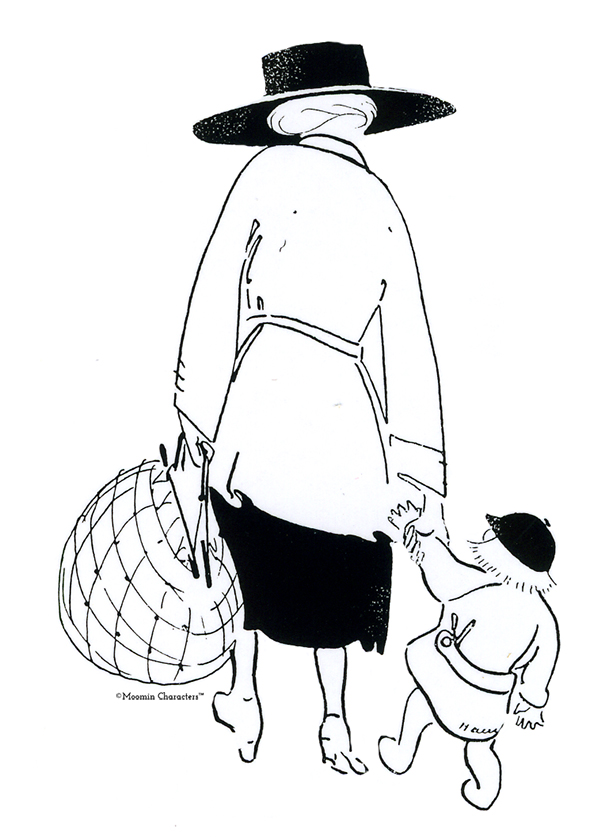Tove Jansson‘s mother, Signe Hammarsten Jansson, had a huge influence on her daughter’s career – the importance was remarkable. In her mother’s arms, Tove learned how to draw, even before she learned to walk.
Ham, as everyone called Tove’s mother, worked as an illustrator. Among her numerous different illustration projects, she, for example, designed banknotes for the Bank of Finland and also designed all the Finnish postage stamps during 1929-1962. With her mother’s guidance, the soon-to-be artist Tove got a natural affinity for drawing and art. Tove was used to seeing her mother draw day after day, hour after hour, whether it was illustrations for books, magazines, book covers, stamps, or something else.
In the Jansson family, the father Viktor “Faffan”, was an artist. At the time, there wasn’t usually space for two artists in one family. Women looked after the children and ran the household while men made art.

Ham lived primarily for her family. Ham portrays her life and women’s role in the 1910s in this skillfully illustrated self-portrait with the shopping bag and a child. In this picture, the child is her daughter, Tove.
The role of women and the appreciation of their work were usually totally underrated. Besides Ham having a strong impact on Tove’s artistic career, Tove’s experiences in the daily life of her own family made her assess women’s role for example in marriage.
In the Moomin stories, equality has a big role. Despite your gender, race, religion, or sexuality, everyone deserves to be heard and appreciated. The ability to choose your own paths, as well as individual freedom, were often highlighted in the Moomin books and comics. These were personally important values for Tove Jansson – based on her own experiences.
